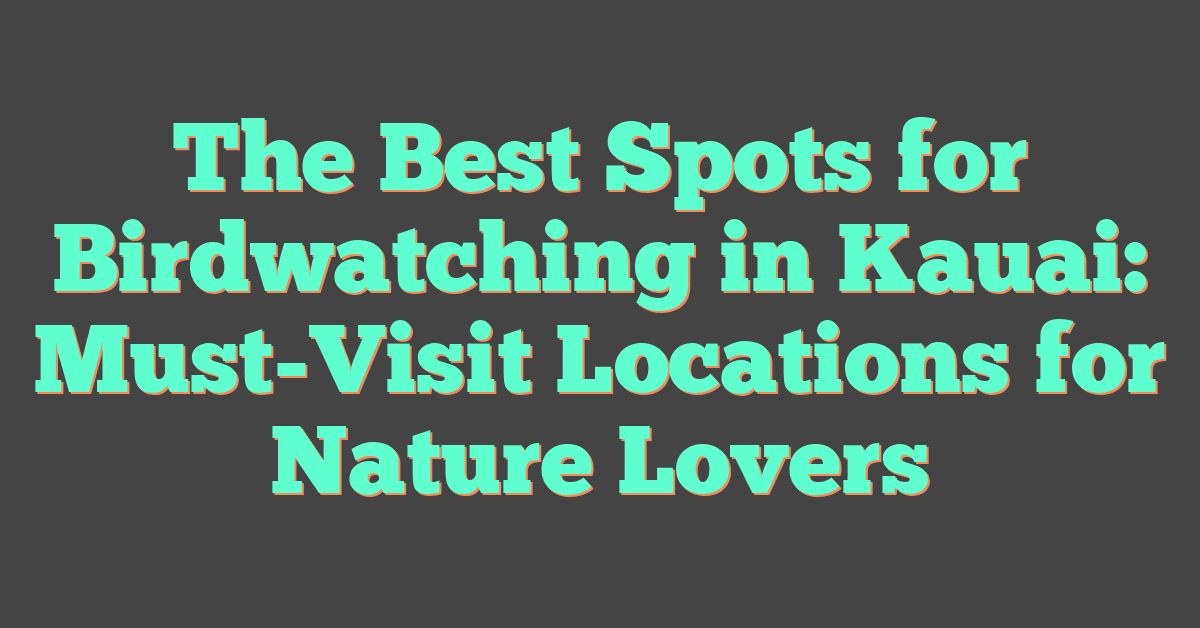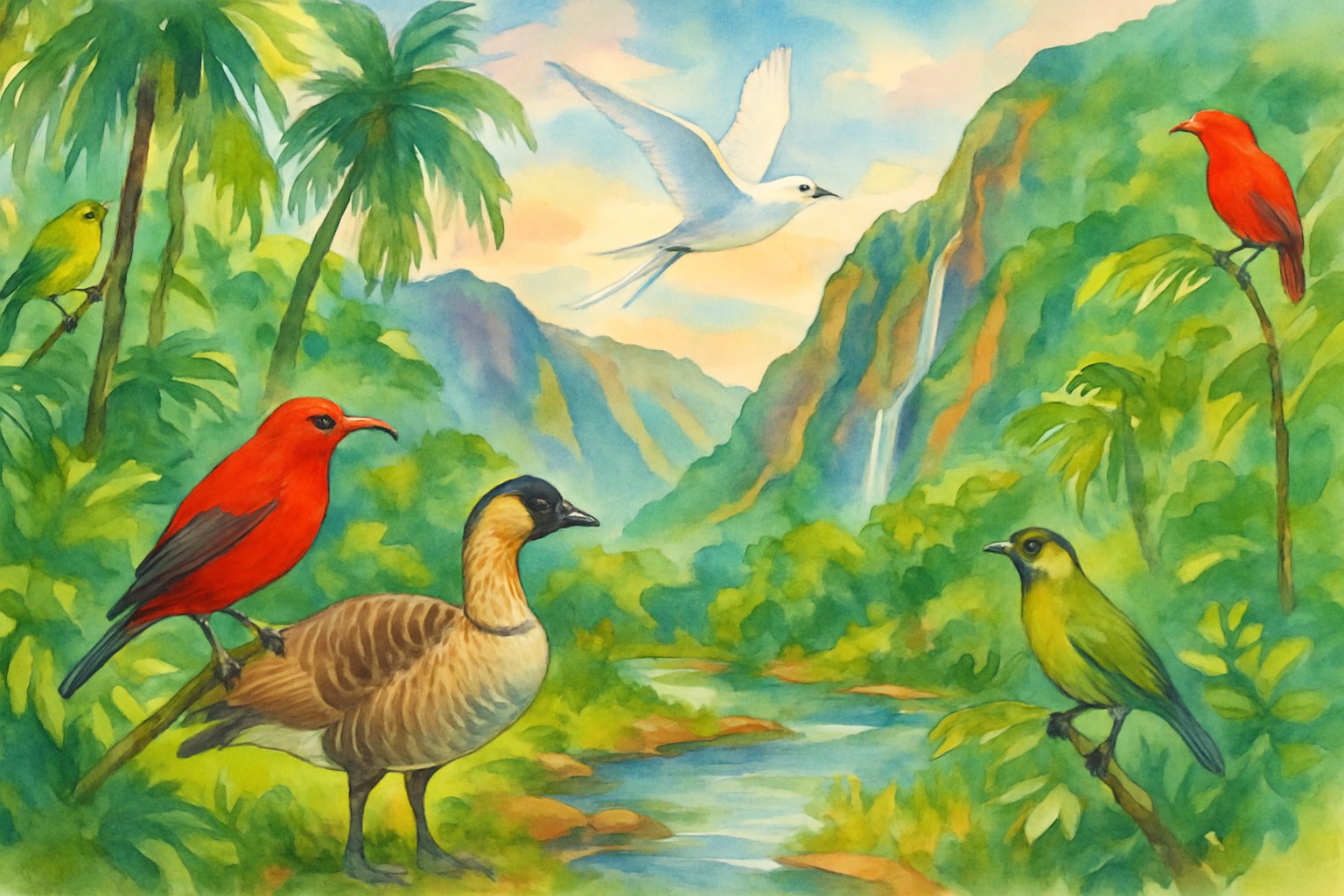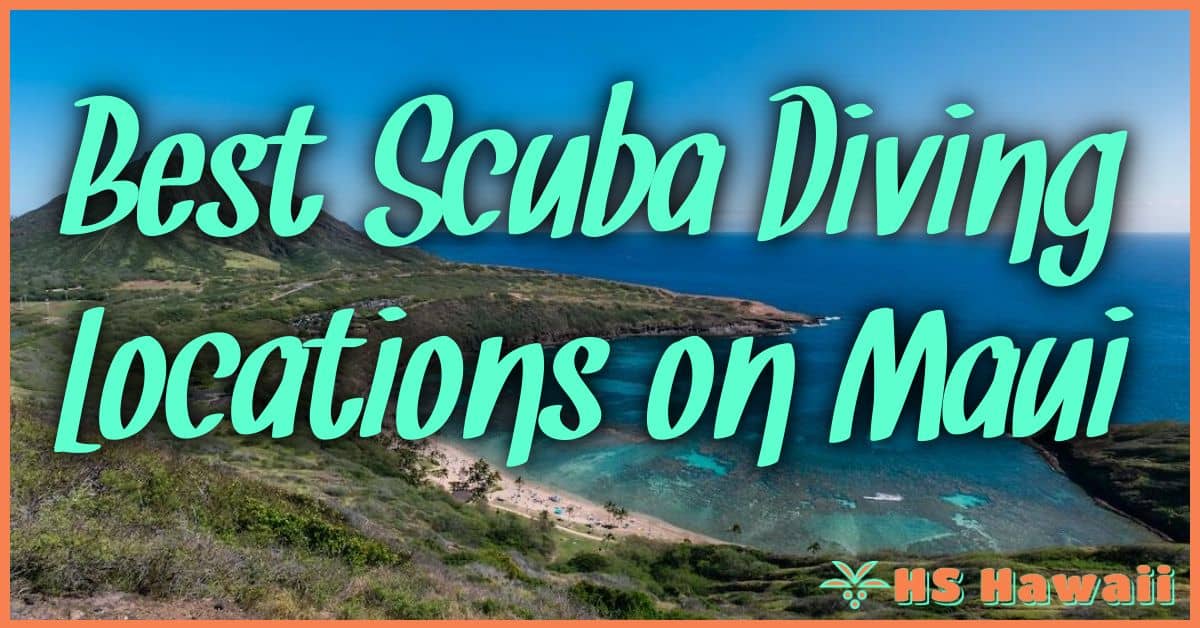When I visit Kauai, I love birdwatching. The island is full of bright, unique birds that you can’t find anywhere else in Hawaii.

Some of the best spots for birdwatching in Kauai are Kōke’e State Park, Kīlauea National Wildlife Refuge, and the Wailua River Valley. Each place has its own special beauty and birds to see.

I enjoy walking through green forests and along rivers while I look for rare birds. Kauai makes it easy with many great locations.
Even if you’re new to birding, these spots have clear trails and many chances to see both local and visiting species.
Why Kauai Is a Top Birdwatching Destination

Kauai is famous for its natural beauty and amazing variety of birds. The island’s different landscapes, local species, and visiting seabirds make each trip unique.
Unique Ecosystems
Kauai has forests, wetlands, mountains, and coastal cliffs, all on one island. Each habitat lets me see birds that live nowhere else.
Honeycreepers flit through native trees, and seabirds soar along the cliffs. The mountain rainforests are especially lush.
In places like the Alakai Swamp, thick trees and streams are home to rare birds. Wetlands such as Hanalei National Wildlife Refuge host wading birds and waterfowl year-round.
Coastal spots, including the Kilauea Point National Wildlife Refuge, fill up with nesting seabirds and offer ocean views. These unique ecosystems sit close together, so I can visit many habitats in one day.
Endemic Birds of Kauai
Some of the most fascinating birds I’ve seen here live only in the Hawaiian Islands. Endemic birds like the nene, Hawaii’s state bird, often graze in open fields or wetlands.
The small, greenish-yellow Kauai amakihi moves quickly through the forests. I also look for the shy puaiohi (Kauai thrush) and the bright red apapane.
The elepaio, curious and active, sometimes comes right up to me when I walk quietly in the woods. Tiny honeycreepers like the anianiau dart around flower blossoms looking for nectar.
Sadly, many of these birds have become rare. Kauai still gives me a chance to spot them and see how special the island is for endemic birdlife.
Migratory and Seabird Populations
Kauai attracts birders because it is a major resting and nesting spot for migratory and seabird species. During certain times of year, I watch large groups of seabirds such as red-footed boobies, Laysan albatross, and wedge-tailed shearwaters gliding overhead or tending to their nests.
The island has some of the best spots for seabird watching, especially at coastal lookouts and wildlife refuges. Migratory shorebirds, like Pacific golden-plovers and various sandpipers, arrive in the fall and winter.
Seeing so many seabird colonies along Kauai’s cliffs and beaches is exciting. The mix of resident, migratory, and nesting birds creates a birdwatching experience that’s unlike anywhere else.
Best Birdwatching Spots in Kauai
Kauai lets me see rare birds in their natural habitats, from high sea cliffs to lush wetlands. I spot both native Hawaiian species and visiting seabirds.
Kilauea Point National Wildlife Refuge
When I visit Kilauea Point, I first notice the famous Kilauea Lighthouse above the ocean cliffs. This refuge is one of the best spots to see large seabird colonies up close.
I always see red-footed boobies nesting in big groups. During the right season, I spot Laysan albatross, red-tailed tropicbirds, and white-tailed tropicbirds flying overhead.
The lookout makes it easy to use binoculars for a closer view. I’m often amazed by the size of the nene—the Hawaiian goose.
I also spot Hawaiian monk seals on the rocks below. I find the walking paths safe and well-marked.
Clear signs and information boards help me learn more about each species. I always check hours before I go, since the refuge sometimes closes for bird nesting or weather.
For more details, I use this Kilauea Point National Wildlife Refuge guide.
Hanalei National Wildlife Refuge
Hanalei National Wildlife Refuge lets me see water birds in big open fields and quiet wetland ponds. This area is the best place on Kauai to spot endangered Hawaiian waterbirds, like the Hawaiian duck (koloa maoli), Hawaiian coot, Hawaiian stilt (black-necked stilt), and Hawaiian gallinule (common gallinule).
I usually bring my camera with a zoom lens, as most viewing is from the edge of the wetlands. I often watch cattle egrets walking near the pools, picking through the grass for insects.
From the road, there are pullouts for parking, so I can stop and watch quietly from my car or a safe lookout. The early morning hours are best to see birds feeding and hear their soft calls.
More information and directions are in this birdwatching guide to Kauai.
Koke’e State Park and Pihea Trail
Koke’e State Park sits above Waimea Canyon and has cool, misty forest. Here, I get a chance to see some of Kauai’s endemic forest birds.
The Pihea Trail is one of my favorite spots because it’s quiet and far from crowds. As I walk, I often see the apapane and sometimes the rare omao (Kauai thrush).
If I’m lucky, I hear the rustle of the pueo—the Hawaiian short-eared owl. The high, wet forest is a good place for native plants and moss.
Birds are active here in the morning. I find it helpful to dress warmly and bring rain gear since weather can change quickly.
The views of Alakai Swamp and the valley below are breathtaking. I stay on marked paths for safety and to protect bird habitats.
The nearby visitor center offers tips and updates about recent sightings. For a full description, I check Koke’e State Park and Pihea Trail birdwatching spots.
Lihue and Surrounding Wetlands
Around Lihue and its wetlands, I find easy-to-reach birding locations if I don’t have much time. I usually see many ducks, coots, black-necked stilts, and moorhens in these lowland areas, especially where streams and ponds meet.
Some of the best spots are near Menehune Fishpond and the Huleia National Wildlife Refuge. I often catch sight of egrets flying over the fields.
There is a chance of spotting Hawaiian petrel during the right season. Even city parks and golf courses sometimes have red-crested cardinals and small flocks of nene geese.
Most viewing areas in Lihue are flat and have parking nearby, which makes it easy to bring binoculars or a camera. Some wetlands have platforms with benches and shade, so I can watch birds in comfort.
For more ideas about accessible trails and locations, I use this list of Kauai’s best birdwatching trails.
Distinctive Bird Species of Kauai
Kauai is home to rare native birds, dramatic coastal seabirds, and many colorful species you might see in forests or gardens. Some species live nowhere else in the world, while others are common sights along coastal cliffs and inland trails.
Rare and Endangered Birds
I get excited when I spot one of Kauai’s rarest birds. The nene, or Hawaiian goose, is the state bird and survives in small numbers.
I often find them near parks and mountain areas, such as Kōke‘e State Park. Some of the most critically endangered native forest birds include the akikiki and akeke‘e.
These birds only live on Kauai, and their populations are extremely low. Researchers work hard to save them.
Other honeycreepers like the bright green ‘anianiau, yellowish Kauai amakihi, and the red ‘apapane are also special to the island. The i‘iwi is rarer here than on other islands but stands out with its curved bill and scarlet feathers.
The elepaio is another Kauai native that I sometimes see flitting in the forest understory.
Here’s a quick look at some rare birds to look for:
| Bird Name | Status | Where to Look |
|---|---|---|
| Nene | Vulnerable | Parks, golf courses |
| Akikiki | Critically Endangered | Alakai Wilderness |
| Akeke‘e | Critically Endangered | Kōke‘e forests |
| ‘Anianiau | Endemic | Upland forests |
| Kauai Amakihi | Endemic | Forested areas |
Seabirds and Coastal Species
Kauai’s rugged coasts are famous for large seabird colonies. The cliffs at Kīlauea Point National Wildlife Refuge are especially good for spotting red-footed boobies, great frigatebirds, and Laysan albatross.
These big birds glide over the waves or nest right on the cliffs. In summer, I find wedge-tailed shearwaters nesting in burrows.
One highlight for me is seeing the Hawaiian petrel, which is endangered and mostly nests on remote mountain slopes. The white tern floats gracefully above the coast, and I sometimes see red-tailed tropicbirds here as well.
Each species adds to the drama of Kauai’s ocean views.
Common Seabirds:
- Red-footed booby
- Great frigatebird
- Laysan albatross
- Wedge-tailed shearwater
- Hawaiian petrel
- White tern
Common Forest and Garden Birds
When I explore gardens or forest trails, I spot many colorful birds. I often see the zebra dove and common myna walking on lawns or perched on fences.
People introduced these birds, but now they are a usual sight. I also find the bright green-and-white java sparrow and the brown chestnut munia in gardens.
Small groups of rose-ringed parakeet chatter in the trees. Sometimes, the red-whiskered bulbul and the colorful red-billed leiothrix turn up in shrubbery.
I listen for the white-rumped shama in forested areas because of their beautiful songs and long tails. Red junglefowl, or wild chickens, live everywhere on Kauai, and I always hear their crowing.
Birds I frequently see:
- Zebra dove
- Common myna
- Java sparrow
- Chestnut munia
- Rose-ringed parakeet
- Red-whiskered bulbul
- White-rumped shama
- Red-billed leiothrix
- Red junglefowl
Birdwatching Tips and Seasonal Highlights
Kauai has rare birds and beautiful scenery. I stay safe, prepare well, and respect the environment every time I go birding.
Best Times of Year for Birdwatching
I get the best birdwatching experiences in Kauai from October to April. These months bring cooler weather and rare migratory birds.
In winter, I spot resident species like the nene goose and see migratory shorebirds along the coast. Spring is my favorite because native forest birds become more active and easier to see.
Birding tours are also more available in these seasons. Early mornings offer the highest bird activity.
Cloudy days work well for bird photography because the light is softer and it is less hot.
What to Bring and How to Prepare
I always pack for birding in Kauai:
- Binoculars to see birds high in the trees or across water.
- Field guidebook or birding app to help identify new species.
- Camera with zoom lens for photography.
- Comfortable shoes for muddy trails like those in Kōke‘e State Park.
- Rain jacket or poncho for sudden showers, especially at higher elevations.
- Water, snacks, and sunscreen to stay comfortable during long outings.
Before heading out, I check weather forecasts and trail conditions. I also let someone know my plans when I explore remote spots like the Alakai Swamp.
Responsible Birdwatching and Conservation
My behavior while birdwatching affects the birds and their habitat. I never feed wild birds and I keep a good distance from nests and sensitive areas.
To protect endangered species, I stay on marked trails when possible. I join local birding tours that follow conservation guidelines and support local programs.
Many groups in Kauai work to save native birds like the Hawaiian honeycreeper. I use quiet voices and move slowly to see more birds and avoid causing stress.
I always carry out my trash and support groups that protect birds and their environment.
Birdwatching Adventures Beyond Kauai
Birdwatching in Hawaii goes beyond Kauai. Each island has rare species and beautiful areas to explore.
Notable Birding Spots on Other Hawaiian Islands
When I visit the Big Island, I make time for the Hakalau Forest National Wildlife Refuge. This spot has rich bird life, including the bright red akiapolaau, the gold-and-green Hawaii amakihi, and the tiny Hawaii creeper.
Some of these birds live nowhere else in the world. On Oahu, I look for the rare Oahu elepaio and the Oahu amakihi.
The Kaena Point Natural Area Reserve is my top spot for seabirds like Laysan albatross and wedge-tailed shearwaters. In Waikiki, I may not see as many native species, but parks around the city can still offer good birding.
If I travel to Maui, I visit the lush forests near Haleakala to find the honeycreeper akohekohe. Each island has its must-see sites and unique birds.
Must-Visit Birding Sites by Island
| Island | Top Spot | Notable Species |
|---|---|---|
| Big Island | Hakalau Forest NWR | Akiapolaau, Hawaii amakihi, Palila, Hawaii akepa, Hawaii creeper |
| Oahu | Kaena Point, Wetland Parks | Oahu elepaio, Oahu amakihi, seabirds |
| Maui | Haleakala slopes | Akohekohe, Maui parrotbill |
Differences Between Kauai and Neighboring Islands
Kauai has beautiful rainforests and rare birds like the apapane and akekee. I often spot these birds in places like Koke’e State Park.
The Big Island’s forests feel more secluded and have more native honeycreepers, including endangered species like the palila and Hawaii akepa. Maui has unique birds not found elsewhere.
Oahu is where I search for special species that live in more developed landscapes. The different habitats—volcanic slopes, high wet forests, and dry shrublands—mean each island gives me a new birdwatching experience.
Some places, like Hakalau Forest, are harder to access and may need special permits. On Oahu, birding sites are closer to cities and easier for me to visit on short notice.
Connecting with Local Birding Communities
When I want local tips or up-to-date sightings, I connect with local birding groups.
Almost every island has a dedicated birdwatching club or a Facebook group. Members share photos, ID help, and event details.
I often book guided tours to see secret spots or learn about native species. Many tour guides know the best places in Hakalau Forest NWR or the deep forests of Maui.
Day trips or meetups help me meet others, especially if I’m new to an island.
Some group leaders organize hikes and educational talks about rare birds.
Online resources and bird-friendly hotels help me plan a smooth trip.




